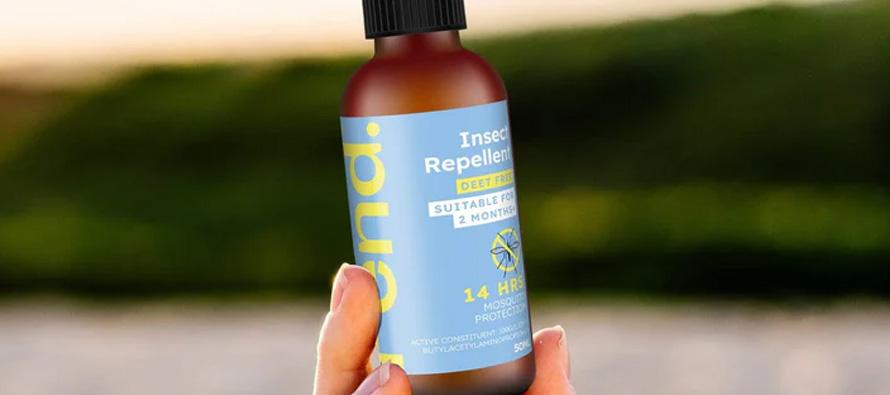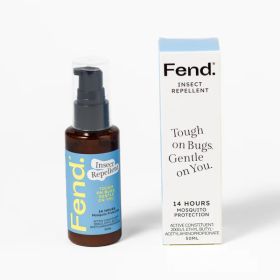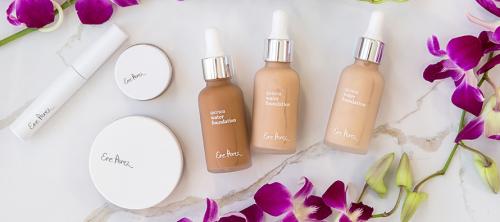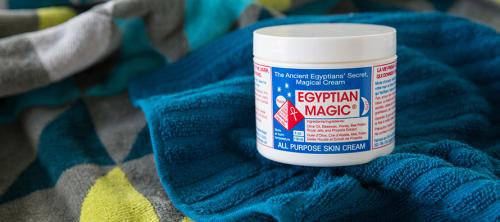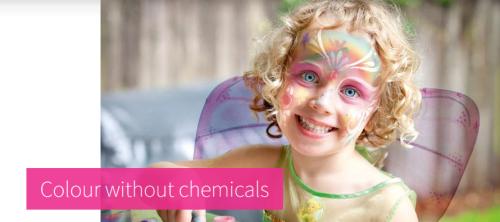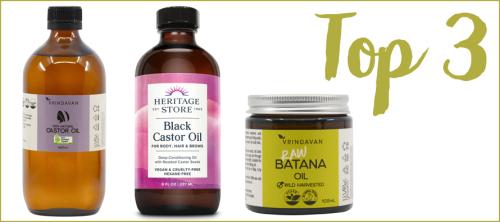Natural mosquito repellent using ethyl butylacetylaminopropionate
As the weather warms up and we start heading outdoors in the evenings again, mozzies, midgets and other bugs like to join us. Mainstream brands like Aeroguard and Bushman are often delivered in an aerosol can and contain DEET as their active ingredient.
For those looking for a natural mosquito repellent, up until now our offerings have all been based around essential oil blends that bug the bugs. This season we have a new offering from USA based brand FEND. They use an active constituent called ethyl butylacetylaminopropionate that is a slow release formula that repels mozzies for 14 hours and is safe for babies 2 months and up. Could this be your new option for keeping the mozzies at bay in Summer 24/25?
What is ethyl butylacetylaminopropionate?
Invented in Germany with the trade name IR3535, ethyl butylacetylaminopropionate is a colourless, odourless biodegradable oil that repels insects including mosquitoes, midges, ticks and head lice.
How effective is ethyl butylacetylaminopropionate as a mosquito repellent?
Clinical studies on Fend allow this product to claim 14 hour protection against mosquitoes. While the active ingredient ethyl butylacetylaminopropionate can also protect against midges, ticks and headlice, protection for these cannot be claimed for 14 hours as the clinical studies did not include them.
What is ethyl butylacetylaminopropionate made from?
Ethyl butylacetylaminopropionate, despite the long and hard to pronounce name is an amino acid that's found naturally in a cucumber tree, Averrhoa Bilimbi.
How long does Fend Insect Repellent last?
Fend offers 14 hour protection due to a very unique offering that we haven't seen in this category before. Other natural insect repellents are absorbed in to the skin when applied, the active ingredient in Fend is held in little natural microcapsules formed from algae and mushroom extracts. Like little bubbles, they burst over time, extending the period of release of the active ingredient.
Is Fend Insect Repellent registered with the APVMA
Yes. The APVMA are the Australian regulatory body for the control of products calling themselves an insect repellent. The approval number for Fend is 91808/133517. The TGA don't regulate this product, but they do regulate all sunscreen products in Australia.
What does Fend Insect Repellent feel / smell /taste like?
Fend feels more like a moisturiser than an oil based repellent. It dries quickly, leaving almost no trace to the touch of your skin. The manufacturer mention on their website that in testing, because it's colourless and odourless, product testers weren't sure if they even had it on, so a subtle fragrance was added. It feels lighter than your zinc sunscreen does.
You're wondering why we're talking about the taste of this repellent right about now. Apparently it has a rather awful taste. Now it's not designed to be tasted or licked, but if you do by accident, be warned, it's not nice. It's extra incentive to wash your hands properly after application and avoid cross touching your arms and then your mouth.
Is Fend Insect Repellent safe to use on babies?
Yes. It can be used from the ages of 2 months and onwards. There are 2 warnings for this product, the first one is the awful taste, and the second one is that this product can sting the eyes. For this reason, do not apply it to babies hands, back or front. If they put their hands up to their eyes, it will sting.
Is Fend Insect Repellent absorbed by the skin?
No. Once applied, the active ethyl butylacetylaminopropionate sits on the skin, much like zinc oxide in your mineral sunscreen does. In fact, these two products have a lot in common, but your natural sunscreen is predominantly used in the heat of the day and your insect repellent later in the day as the sun starts to go away.
